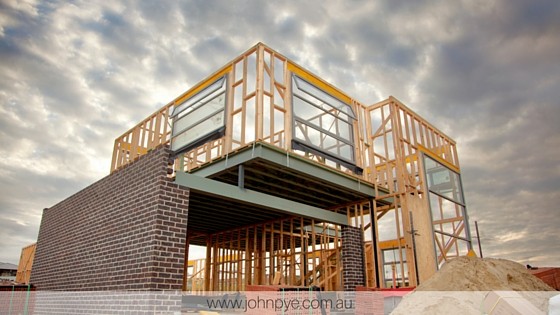A common mistake many investors make is thinking that their older property isn’t eligible for tax depreciation. However, there are many cases in which you can still make a claim. Take a look at the difference in tax depreciation between old and new properties, and discover how an older property could still help you claim thousands.
Types of tax depreciation
A common question asked by investors is “can my older property still get depreciation?” The short answer is very likely yes. While it’s true that newer properties will generally give you more depreciation for the simple fact that they’re newer and cost more to build, older properties still offer many significant tax benefits for investors.
For starters, there are two different types of tax depreciation deductions:
- The capital works deduction.
- The plant and equipment deduction.
The capital works deduction refers to the long-lasting, structural items of a property – such as your concrete floors, walls and roof. The plant and equipment deduction covers the removable items within a property, such as the water heater, carpets, stoves, blinds and curtains.
Depending on the age of your property, you may be able to claim one or both types of deductions.
Dates matter for tax depreciation
While most properties do qualify for some level of depreciation, there are some important dates to keep mind. In particular, the capital works deduction only applies to residential properties built after 15 September 1987, so in order to claim this deduction, a property needs to have been built (or renovated) after this date.
The capital works deduction lets you claim 2.5% of the actual construction costs of a property at the time it was built, for up to 40 years. For example, if your investment property was built in 2000 with a structural cost of $400,000, you’ll get a 2.5% deduction worth $10,000 each year for up to 40 years from the time it was built, or until 2040.
So, if you’re lining up two houses next to each other to buy – one built in 1986 and the other built in 1988, and all other things being equal – you should consider buying the house built in 1988 because you can still claim a percentage of the building allowance deduction.
Deductions for properties built before 1987
What if your investment property was built prior to 1987? Does that mean you can’t claim anything under the capital works deduction? Not necessarily.
Because the capital works deduction covers the structural items of a property, this also includes any renovations done to the property after 15 September 1987. Older properties, especially now, are being renovated. So even though a building may be older than 1987 it may still have years of renovation-related tax depreciation left, which can be claimed at the regular capital works 2.5% annual rate.
There’s also the plant and equipment deduction, which is not related to the age of your property, but to the items themselves. With many common household items having an effective life span of 10 years or more, the savings can be substantial. The key is to understand which items in your property still have value, and to not be too hasty in throwing them away.
Getting the right advice
When it comes to older investment properties, the question isn’t whether a property will qualify for tax depreciation, but rather how much it will qualify. That’s why it’s important to seek out the right advice. With a few photos and some basic questions, a qualified Quantity Surveyor can easily give you an estimate on your property’s available deductions.
Article provided by BMT Tax Depreciation.
Bradley Beer (B. Con. Mgt, AAIQS, MRICS) is the Chief Executive Officer of BMT Tax Depreciation.
Please contact 1300 728 726 or visit www.bmtqs.com.au for an Australia-wide service.
